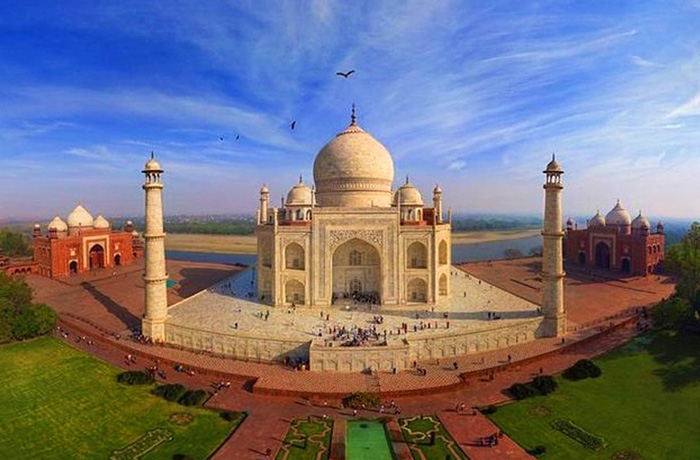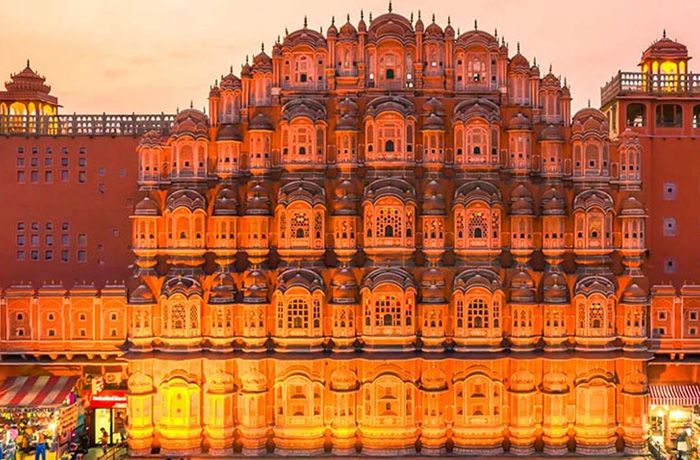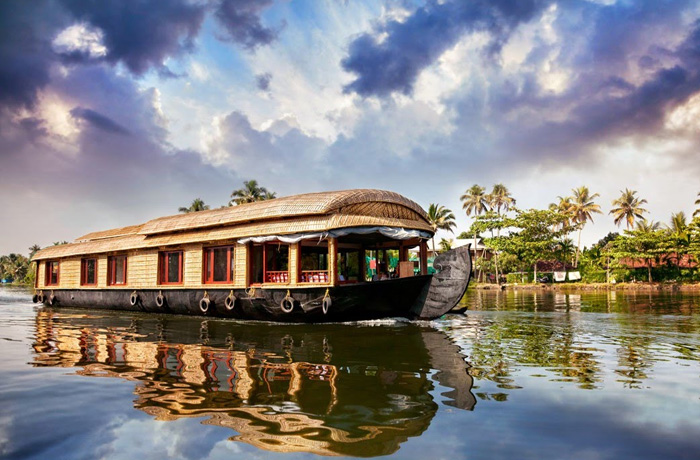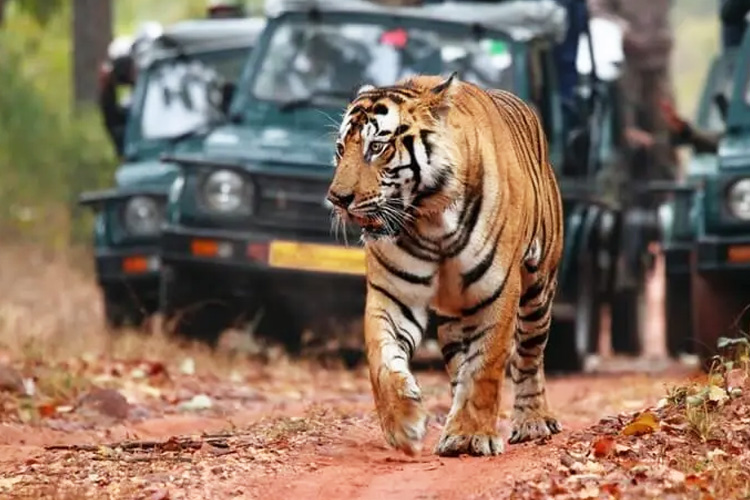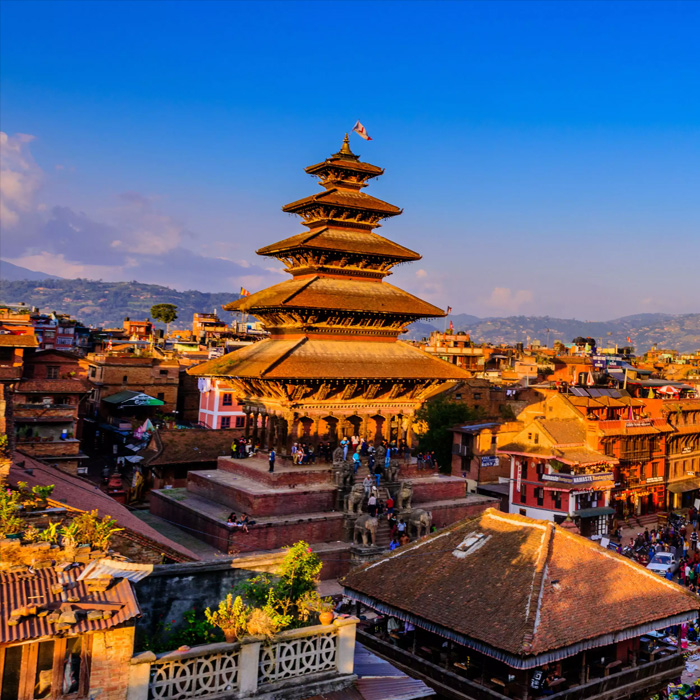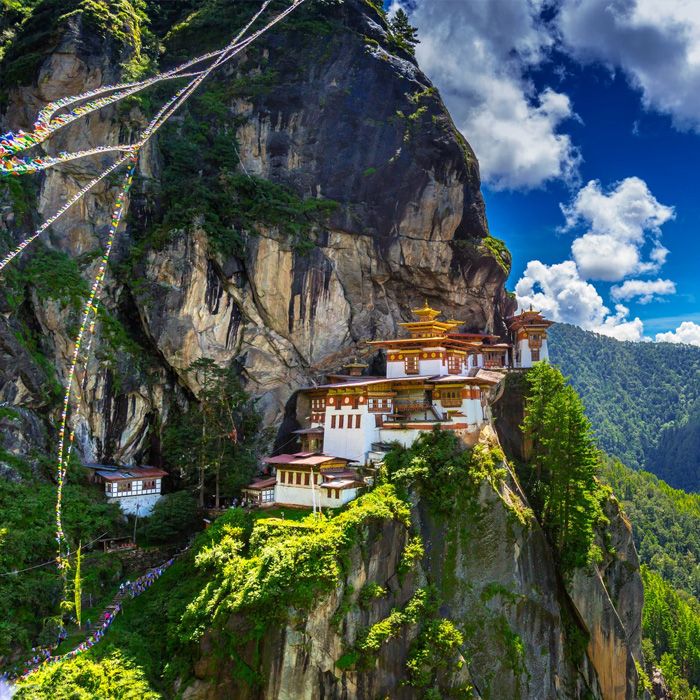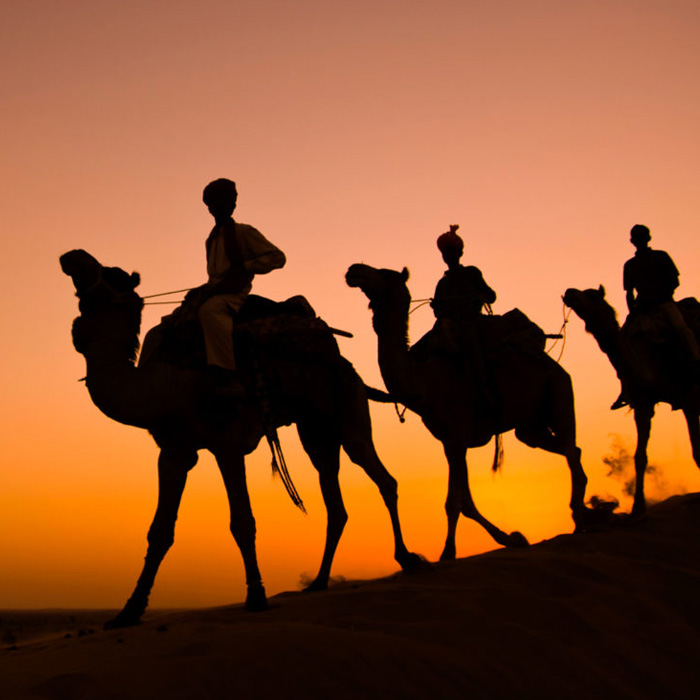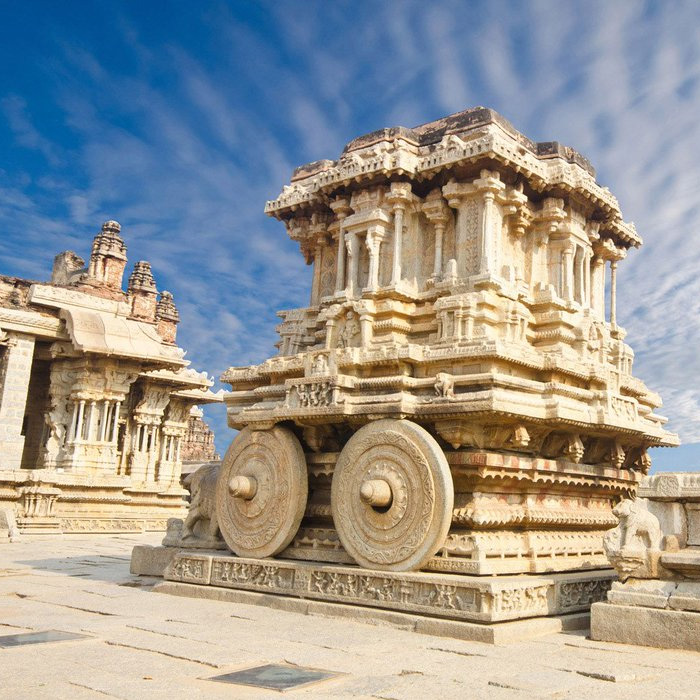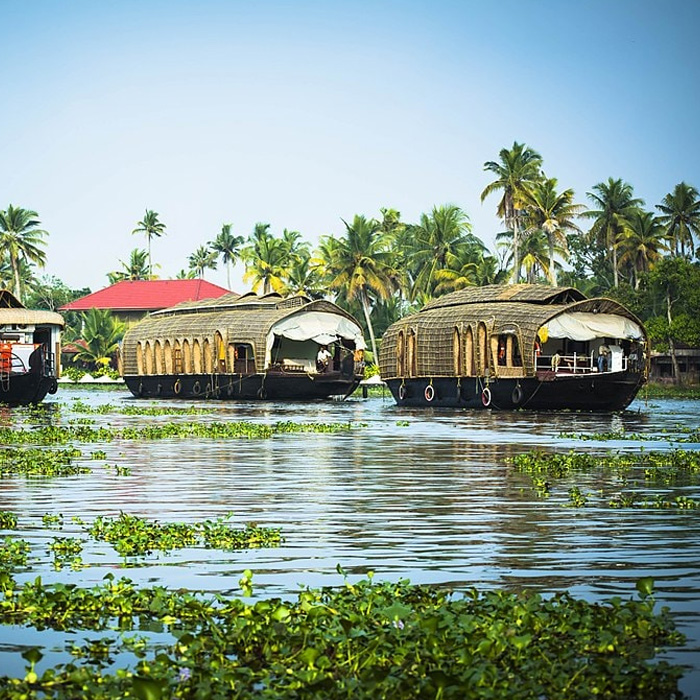Beautiful Nepal Tour
Description
Duration : 6 Nights & 7 Days
Destinations : Kathmandu – Bhaktapur - Nagarkot - Pokhra – Kathmandu
Explore Detailed Itinerary Below
Day 1 - Arrive Kathmandu (by Flight)
Arrive at Kathmandu airport, meet and assist at the airport and followed by transfer to hotel.
Kathmandu, Nepal's capital, is set in a valley surrounded by the Himalayan mountains. At the heart of the old city’s mazelike alleys is Durbar Square, which becomes frenetic during Indra Jatra, a religious festival featuring masked dances. Many of the city's historic sites were damaged or destroyed by a 2015 earthquake. Durbar Square's palace, Hanuman Dhoka, and Kasthamandap, a wooden Hindu temple, are being rebuilt.
Overnight stay at hotel.
Kathmandu, Nepal's capital, is set in a valley surrounded by the Himalayan mountains. At the heart of the old city’s mazelike alleys is Durbar Square, which becomes frenetic during Indra Jatra, a religious festival featuring masked dances. Many of the city's historic sites were damaged or destroyed by a 2015 earthquake. Durbar Square's palace, Hanuman Dhoka, and Kasthamandap, a wooden Hindu temple, are being rebuilt.
Overnight stay at hotel.
Day 2 - Kathmandu
Morning breakfast at hotel and proceed to leave for sightseeing tour of Kathamndu
Visit Pashupatinath and Boudhanath Stupa, Kathmandu Darbar Square, Swayambhu Temple, Dakshinkali Temple, Kathmandu etc..
Pashupatinath Temple - One of the holiest Hindu shrines in Nepal, the Pashupatinath Temple is stretched across both the banks of the beautiful and sacred Bagmati River on the easte rn fringes of the capital city of Kathmandu. The magnificent sanctum devoted to Lord Shiva draws in thousands of devotees who come to offer their prayers and seek blessings from him. Sprawled over a large area with temples and ashrams, it is believed that the Jyotirlinga housed in the Pashupatinath temple is the head of the body which is made up of the twelve Jyotirlinga in India. In 1979, the magnif icent temple was declared a UNESCO World Heritage Site.
Boudhanath Stupa - Situated at about 11 kilometres from the city centre of Kathmandu, Boudhanath Stupa dominates the Kathmandu skyline with its gargantuan spherical shape. Thousands of pilgrims from different religions gather here daily. They perform a ritualistic circumnavigation, known as the 'kora', of the colossal dome. It is believed that anyone who circumambulates the stupa with no ill thoughts in their hearts receives good karma. Moreover, the gates of hell are permanently closed for them!
Kathmandu Darbar Square - Kathmandu Durbar Square. The place which has witnessed and received one king after the other as they sat and ruled over Nepal a long time ago, where new rulers were crowned while the steady beats of drums and trumpets filled the place. The regal Kathmandu Durbar Square is one of the three durbar squares in the country. Till date, the place remains the most remarkable legacy of Kathmandu's traditional architecture. Even though the unfortunate earthquake of 2015 took its toll on the building and around half a dozen places within the premises collapsed, it has still retained its original glory. Three squares - A former elephant stable Basantapur square, main Durbar square on the west and another part of Durbar Square that houses the entrance to Hanuman Dhoka which are loosely connected make up the Durbar Square area.
Swayambhu Temple - Perched on top of the Semgu Hill located in the outskirts to the west of the Kathmandu Valley, Swayambhu Temple temple is one of the most important eligious shrines in the city of Kathmandu. With a wite dome stupa and an array of shrines, this place d raws people to it daily. Circumnavigating the temple in a clockwise direction is a common practice among the pilgrims since it is believed to wash away all the sins. The sanctum is one of the holiest sites among the Buddhists and Tibetans and is second only to the Lord Boudha for them.
Evening return to Kathmandu.
Overnight stay at hotel.
Visit Pashupatinath and Boudhanath Stupa, Kathmandu Darbar Square, Swayambhu Temple, Dakshinkali Temple, Kathmandu etc..
Pashupatinath Temple - One of the holiest Hindu shrines in Nepal, the Pashupatinath Temple is stretched across both the banks of the beautiful and sacred Bagmati River on the easte rn fringes of the capital city of Kathmandu. The magnificent sanctum devoted to Lord Shiva draws in thousands of devotees who come to offer their prayers and seek blessings from him. Sprawled over a large area with temples and ashrams, it is believed that the Jyotirlinga housed in the Pashupatinath temple is the head of the body which is made up of the twelve Jyotirlinga in India. In 1979, the magnif icent temple was declared a UNESCO World Heritage Site.
Boudhanath Stupa - Situated at about 11 kilometres from the city centre of Kathmandu, Boudhanath Stupa dominates the Kathmandu skyline with its gargantuan spherical shape. Thousands of pilgrims from different religions gather here daily. They perform a ritualistic circumnavigation, known as the 'kora', of the colossal dome. It is believed that anyone who circumambulates the stupa with no ill thoughts in their hearts receives good karma. Moreover, the gates of hell are permanently closed for them!
Kathmandu Darbar Square - Kathmandu Durbar Square. The place which has witnessed and received one king after the other as they sat and ruled over Nepal a long time ago, where new rulers were crowned while the steady beats of drums and trumpets filled the place. The regal Kathmandu Durbar Square is one of the three durbar squares in the country. Till date, the place remains the most remarkable legacy of Kathmandu's traditional architecture. Even though the unfortunate earthquake of 2015 took its toll on the building and around half a dozen places within the premises collapsed, it has still retained its original glory. Three squares - A former elephant stable Basantapur square, main Durbar square on the west and another part of Durbar Square that houses the entrance to Hanuman Dhoka which are loosely connected make up the Durbar Square area.
Swayambhu Temple - Perched on top of the Semgu Hill located in the outskirts to the west of the Kathmandu Valley, Swayambhu Temple temple is one of the most important eligious shrines in the city of Kathmandu. With a wite dome stupa and an array of shrines, this place d raws people to it daily. Circumnavigating the temple in a clockwise direction is a common practice among the pilgrims since it is believed to wash away all the sins. The sanctum is one of the holiest sites among the Buddhists and Tibetans and is second only to the Lord Boudha for them.
Evening return to Kathmandu.
Overnight stay at hotel.
Day 3 - Kathmandu – Nagarkot (28 kms / 1 hrs) - Kathmandu
Morning breakfast and proceed to leave for drive to Nagarkot en-route visit Bhaktapur.
Bhaktapur, known locally as Khwopa, is a city in the east corner of the Kathmandu Valley in Nepal located about 13 kilometres from the capital city, Kathmandu. It is in and serves as the headquarters of Bhaktapur District in Bagmati Province of Nepal. In terms of area, Bhaktapur is the smallest city of Nepal.
Visit Changu Narayan Temple of Bakhtapur - The ancient Hindu temple of Changu Narayan is located on a high hilltop that is also known as Changu or Dolagiri. The temple was surrounded by champak tree forest and a small village known as Changu. The temple is in Changunarayan Municipality o f Bhaktapur District, Nepal.
Continue drive to Nagarkot……
Nagarkot is a village in central Nepal, at the rim of the Kathmandu Valley. It’s known for its views of the Himalayas, including Mount Everest to the northeast, which are especially striking at sunrise and sunset. The surrounding scrubland is laced with trails and home to many butterflies. To the west is the ancient, pagoda-style Changunarayan Temple, dedicated to Vishnu and a Hindu pilgrimage site.
Upon arrival check-in to the hotel.
Evening view sunset (subject to weather permit)
Return back to Kathmandu
Overnight stay at hotel.
Bhaktapur, known locally as Khwopa, is a city in the east corner of the Kathmandu Valley in Nepal located about 13 kilometres from the capital city, Kathmandu. It is in and serves as the headquarters of Bhaktapur District in Bagmati Province of Nepal. In terms of area, Bhaktapur is the smallest city of Nepal.
Visit Changu Narayan Temple of Bakhtapur - The ancient Hindu temple of Changu Narayan is located on a high hilltop that is also known as Changu or Dolagiri. The temple was surrounded by champak tree forest and a small village known as Changu. The temple is in Changunarayan Municipality o f Bhaktapur District, Nepal.
Continue drive to Nagarkot……
Nagarkot is a village in central Nepal, at the rim of the Kathmandu Valley. It’s known for its views of the Himalayas, including Mount Everest to the northeast, which are especially striking at sunrise and sunset. The surrounding scrubland is laced with trails and home to many butterflies. To the west is the ancient, pagoda-style Changunarayan Temple, dedicated to Vishnu and a Hindu pilgrimage site.
Upon arrival check-in to the hotel.
Evening view sunset (subject to weather permit)
Return back to Kathmandu
Overnight stay at hotel.
Day 4 - Kathmandu – Bandipur - Pokhra (210 kms / 7 hrs)
Morning breakfast at hotel and proceed to leave for Pokhra en-route visit Bandipur.
Bandipur is a hilltop settlement and a rural municipality in Tanahun District, of Nepal. Because of its preserved, old time cultural atmosphere, Bandipur has increasingly been coming to the attention of tourism
Continues drive to Pokhra...
Pokhara is a city on Phewa Lake, in central Nepal. It’s known as a gateway to the Annapurna Circuit, a popular trail in the Himalayas. Tal Barahi Temple, a 2-story pagoda, sits on an island in the lake. On the eastern shore, the Lakeside district has yoga centers and restaurants. In the city’s south, the International Mountain Museum has exhibits on the history of mountaineering and the people of the Himalayas
Upon arrival, check-in to the hotel.
Overnight stay at hotel.
Bandipur is a hilltop settlement and a rural municipality in Tanahun District, of Nepal. Because of its preserved, old time cultural atmosphere, Bandipur has increasingly been coming to the attention of tourism
Continues drive to Pokhra...
Pokhara is a city on Phewa Lake, in central Nepal. It’s known as a gateway to the Annapurna Circuit, a popular trail in the Himalayas. Tal Barahi Temple, a 2-story pagoda, sits on an island in the lake. On the eastern shore, the Lakeside district has yoga centers and restaurants. In the city’s south, the International Mountain Museum has exhibits on the history of mountaineering and the people of the Himalayas
Upon arrival, check-in to the hotel.
Overnight stay at hotel.
Day 5 - Pokhra
Morning breakfast at hotel and proceed to sightseeing tour of Pokhra.
Covering - Phewa Lake, Devi’s Fall, Shree Bindhyabasni Temple, Mahendra Cave etc…
Mahendra Cave - While visiting the Mahendra Cave, bring a headlamp for the best experience of this place to visit in Pokhara. You will have so much fun clicking photos and it will transform you into a whole different world of dark caves. Adventure loving people will lo ve to vis it this place. The place is best to visit in the mornings. The caves are impressive with different sculptures. It might drain out your energy but will leave you with memories that you will be able to cherish all your life.
The Phewa lake is a perfect place to visit in Pokhara. You will fall in love with the ambience of this place, and it offers a pleasurable experience that you can enjoy with your family and friends. Phewa Lake is a famous Pokhara tourist place. You can hire a boat (on direct payment basis), paddle at your own speed while enjoying the warm water below and the gorgeous rays of the sun above your head. You can escape the city life in this serene place. It is best to visit the place during daytime.
Devi’s Fall - Devis Fall is locally known as Patale Chhango, which literally means the underground falls. This fall is one of the best places to visit in Pokhara if you are a waterfall lover. The shiny blue waters struggle along the rocks of the hill to get itself into the laps of Mother Nature. It creates a 500 feet tunnel underground; such is its grandeur and extremity that you will witness it with awe! The falls are surrounded by abundant flora.
Bindhyabasni Temple - On the outskirts of Pokhara, the Shri Bindhyabasini Temple is located on a hilltop and is a mesmerizing place to visit in Pokhara. The temple complex is small but sophisticated. The temple, as claimed by some people, is used for worship by both Hindus and Buddhists.The ambience of the mountains along with the aesthetic temple and the skyline of the Pokhara city is a Pokhara tourist place that attracts tourists from all over India. It is a very good place for scenery and photography. Rest day at leisure and relax.
Overnight at the hotel.
Covering - Phewa Lake, Devi’s Fall, Shree Bindhyabasni Temple, Mahendra Cave etc…
Mahendra Cave - While visiting the Mahendra Cave, bring a headlamp for the best experience of this place to visit in Pokhara. You will have so much fun clicking photos and it will transform you into a whole different world of dark caves. Adventure loving people will lo ve to vis it this place. The place is best to visit in the mornings. The caves are impressive with different sculptures. It might drain out your energy but will leave you with memories that you will be able to cherish all your life.
The Phewa lake is a perfect place to visit in Pokhara. You will fall in love with the ambience of this place, and it offers a pleasurable experience that you can enjoy with your family and friends. Phewa Lake is a famous Pokhara tourist place. You can hire a boat (on direct payment basis), paddle at your own speed while enjoying the warm water below and the gorgeous rays of the sun above your head. You can escape the city life in this serene place. It is best to visit the place during daytime.
Devi’s Fall - Devis Fall is locally known as Patale Chhango, which literally means the underground falls. This fall is one of the best places to visit in Pokhara if you are a waterfall lover. The shiny blue waters struggle along the rocks of the hill to get itself into the laps of Mother Nature. It creates a 500 feet tunnel underground; such is its grandeur and extremity that you will witness it with awe! The falls are surrounded by abundant flora.
Bindhyabasni Temple - On the outskirts of Pokhara, the Shri Bindhyabasini Temple is located on a hilltop and is a mesmerizing place to visit in Pokhara. The temple complex is small but sophisticated. The temple, as claimed by some people, is used for worship by both Hindus and Buddhists.The ambience of the mountains along with the aesthetic temple and the skyline of the Pokhara city is a Pokhara tourist place that attracts tourists from all over India. It is a very good place for scenery and photography. Rest day at leisure and relax.
Overnight at the hotel.
Day 6 - Pokhra - Kathmandu (200 kms / 7 hrs)
Moring breakfast at hotel and proceed to leave for drive to Kathmandu.
Upon arrival, check-in to hotel.
Late Afternoon visit to Patan - Patan is the third largest city in Nepal right after Kathmandu and Pokhara. It is now known as Lalitpur. Both names Patan and Patan are derived from the Sanskrit word ‘Lalitapattan’. The city is located just across the river Bagmati from Kathmandu. Patan has a Durbar Square that is full of statues, temples, and palaces. In addition, Durbar Square also has the ‘Patan museum’ which is a must-see attraction. It is a traditional centre for handicrafts and is also a place to purchase traditional jewellery, Buddha statues, and masks. Overnight stay at hotel.
Rest day free for relax or shopping to local markets.
Overnight at the hotel.
Upon arrival, check-in to hotel.
Late Afternoon visit to Patan - Patan is the third largest city in Nepal right after Kathmandu and Pokhara. It is now known as Lalitpur. Both names Patan and Patan are derived from the Sanskrit word ‘Lalitapattan’. The city is located just across the river Bagmati from Kathmandu. Patan has a Durbar Square that is full of statues, temples, and palaces. In addition, Durbar Square also has the ‘Patan museum’ which is a must-see attraction. It is a traditional centre for handicrafts and is also a place to purchase traditional jewellery, Buddha statues, and masks. Overnight stay at hotel.
Rest day free for relax or shopping to local markets.
Overnight at the hotel.
Day 7 -Kathmandu - Depart (By Flight)
Morning breakfast at hotel.
Later transfer to Airport to connect your onward flight connections.
Later transfer to Airport to connect your onward flight connections.
Inclusion
- Accommodation based on double / twin sharing room for 06 nights with base category of rooms as mentioned above or similar at hotels.
- Any lunches or dinners (other than mentioned above)
- Meal Plan: Breakfast Only at all hotels.
- All transfers and sightseeing by Air-conditioned private Van.
- 500ML mineral water bottle per person / per day in car.
- All presently applicable taxes including service taxes.
Exclusion
- Any services other than the mentioned above.
- Any lunches or dinners (other than mentioned above)
- Any local or accompanying guide services.
- Any cable car ride / boat ride.
- Monuments entrances to sites as per programs.
- Any domestic & international flights.
- Visa charges & Airport taxes.
- Any extras like table drinks, telephone calls, any tips, laundry etc or any other personal expense.
- Still camera or video camera fees.
- Any tips to drive/guide/escort.
- Any travel or medical insurance.
- Any airfare (quoted separately).
- Any tips at restaurant /to guide/ driver etc.
- Any increase in costs beyond our control such as fuel and air fares increase, additional Governments levies and taxes etc.
 WhatsApp
WhatsApp